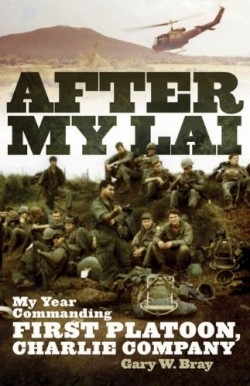After My Lai
My Year Commanding First Platoon, Charlie Company
On March 16, 1968, the soldiers of the First Platoon, Charlie Company, led by Lieutenant William Calley, slaughtered more than 500 children, women, and old men of My Lai village. One year later the author, then a nineteen-year-old second lieutenant, became the leader of this once famous, now notorious platoon. Bray recounts his wartime experiences in this short, gripping memoir and dedicates it to four young soldiers killed in action with whom Bray served.
The author’s style is Spartan, and the material is difficult. The platoon patrolled a dangerous area near the South China Sea known as the “Gaza Strip,” terrain full of swamps, villagers whose loyalties were uncertain, snakes, mosquitoes, and deadly booby traps. Bray himself received a leg wound from a booby trap in 1970, which luckily caused no major damage. Some of Bray’s men were not so fortunate, and died as a result of massive wounds.
Killing and its effect on young soldiers is a recurrent theme. The author’s first kill was a North Vietnamese nurse, a memory Bray claims haunts him more now than when it happened. Another memory that still torments the author is that of his men cheering as they killed an old woman trying to run back to her village.
War, the author says, is a departure from what is acceptable in civilian life. It becomes a series of lines to be crossed-killing another human being, accepting death as a daily happening, and becoming so enraged by the death of friends that a soldier strikes back irrationally, as some of Bray’s men did at My Lai.
Readers may be disappointed by the lack of information about the aftermath of My Lai. However, by the time Bray took command of the First Platoon almost all of the soldiers that had participated in the massacre had finished their tours.
The author remains proud of his service and says he would do it again. His memoir conveys this pride but also his sadness for the brave young heroes who did not return. This is a fine addition to the large body of first-person accounts of those who served in Vietnam, the war that divided and continues to divide our nation.
Disclosure: This article is not an endorsement, but a review. The publisher of this book provided free copies of the book to have their book reviewed by a professional reviewer. No fee was paid by the publisher for this review. Foreword Reviews only recommends books that we love. Foreword Magazine, Inc. is disclosing this in accordance with the Federal Trade Commission’s 16 CFR, Part 255.

